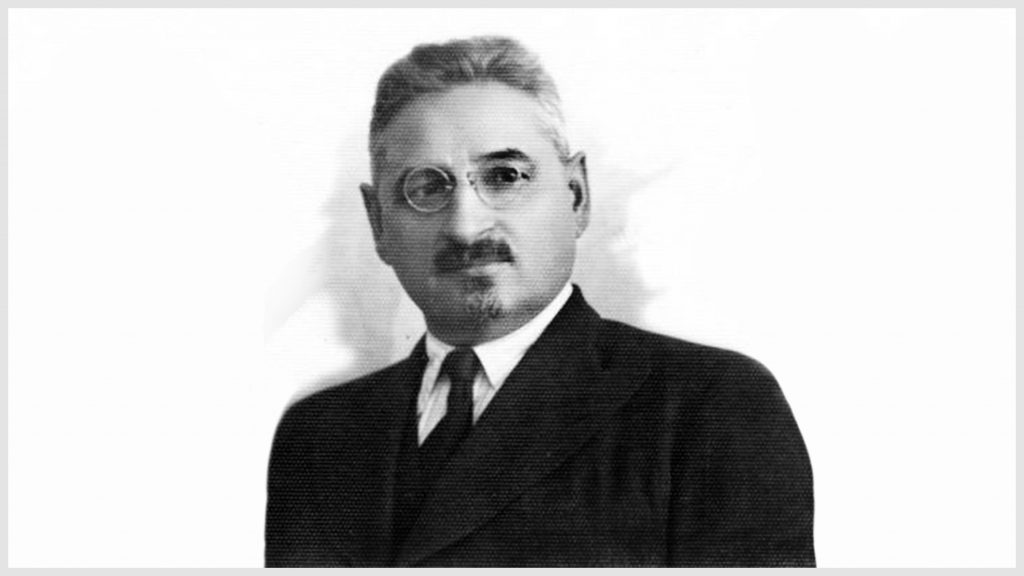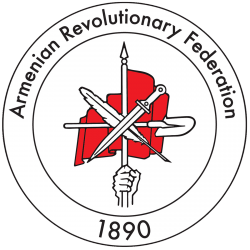Simon Vratsian
 21 May , 1969
21 May , 1969
Born in the village of Metz Sala in Nor Nakhijevan, in the Northern Caucasus, Vratsian received his education at the Gevorgian Seminary in Ejmiatzin. He joined the ARF in 1898, mistakenly believing he was joining the Hnchaks: He had entered the wrong room in a building where both the Hnchaks and the Dashnaks were holding meetings.
He returned to Nor Nakhijevan as a Dashnak fieldworker and represented the region at the ARF’s Fourth World Congress in Vienna in 1907. At that meeting, he supported the party’s adoption of socialism as a principal plank in its platform.
In 1908, Vratsian attended the University of St. Petersburg to study law and education. In 1910, after stays in Moscow, Constantinople, and Batumi, he settled for a time in Erzurum. There, he taught at a local school and edited a local newspaper, and was briefly jailed under suspicion of being a Russian spy.
In 1911, he went to America, where he became editor of the Hairenik daily newspaper. Three years later, he represented the party’s American organization at the ARF’s Eighth World Congress (1914) in Erzurum, playing a key role in discussions regarding party policy vis-à-vis the Young Turk leadership. He was elected a member of the ARF’s Bureau of Armenia.
He then went to the Caucasus and became a member of the committee organizing the Armenian Volunteer Movement. After the disbandment of the Armenian units, he worked as editor of Horizon, in Tiflis, in 1917.
An important figure in the Independent Republic of Armenia (1918–1920), Vratsian was elected to the parliament in 1918 and later served as minister of labor and agriculture in the Ohanjanian cabinet (May to November, 1920). He helped organize the ARF’s 9th World Congress in 1919 in Yerevan, where he was elected to the party’s Bureau. Thereafter, he was elected a member of the ARF Bureau several times.
In the fall of 1920, immediately after the Armeno-Turkish War, he was appointed prime minister. As such, it was his task, on December 2, 1920, to transfer power officially to the Bolshevik Revolutionary Committee (Revkom).
During the February 1921 popular uprising, Vratsian was president of the Committee for the Salvation of the Fatherland. Upon expelling the Bolsheviks, he appealed for assistance to Europe, America, and finally to Kemalist Turkey as well. In April, as Soviet troops invaded Armenia, he escaped with thousands of Armenians to Iran. From there, he went to Bombay, Alexandria, and Constantinople, and eventually Paris.
From 1925 to 1933 he worked on Droshak (which had been moved to Paris) with Arshak Jamalian and Shavarsh Missakian. He then published the periodical Vem and his main work, The Republic of Armenia.
A world traveler, Vratsian went to South America in 1936, North America in 1939, and many other places until finally settling in Lebanon. In 1945, he presented a petition at the founding conference of the United Nations, in San Francisco, demanding the return of Turkish-occupied territories to Armenia.
In 1952, after the death of Levon Shant, he became principal of the Hamazkayin Jemaran, in Beirut, and wrote seven volumes of memoirs and other works. He remained at the Jemaran until his death, in 1969, at age 87.
